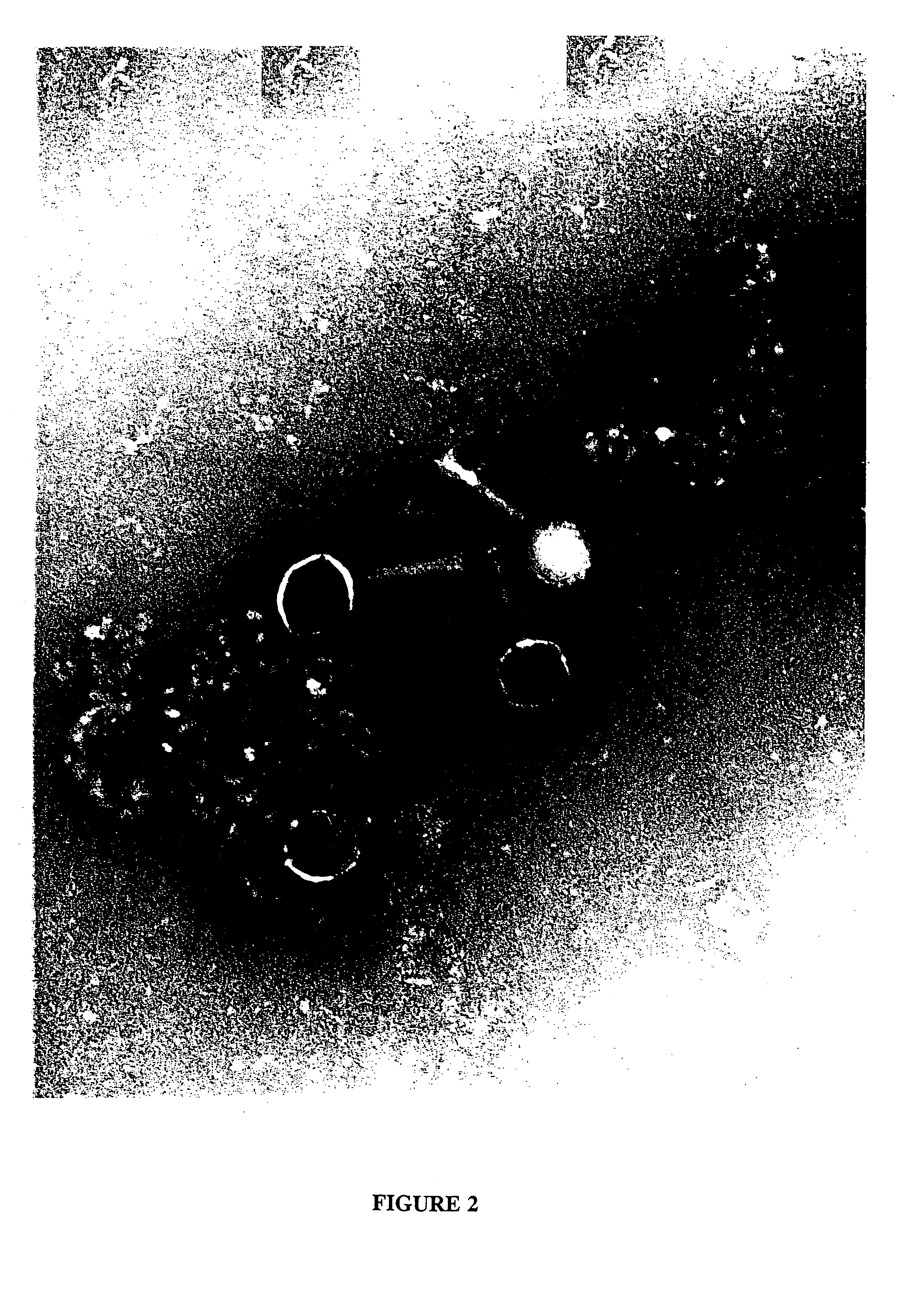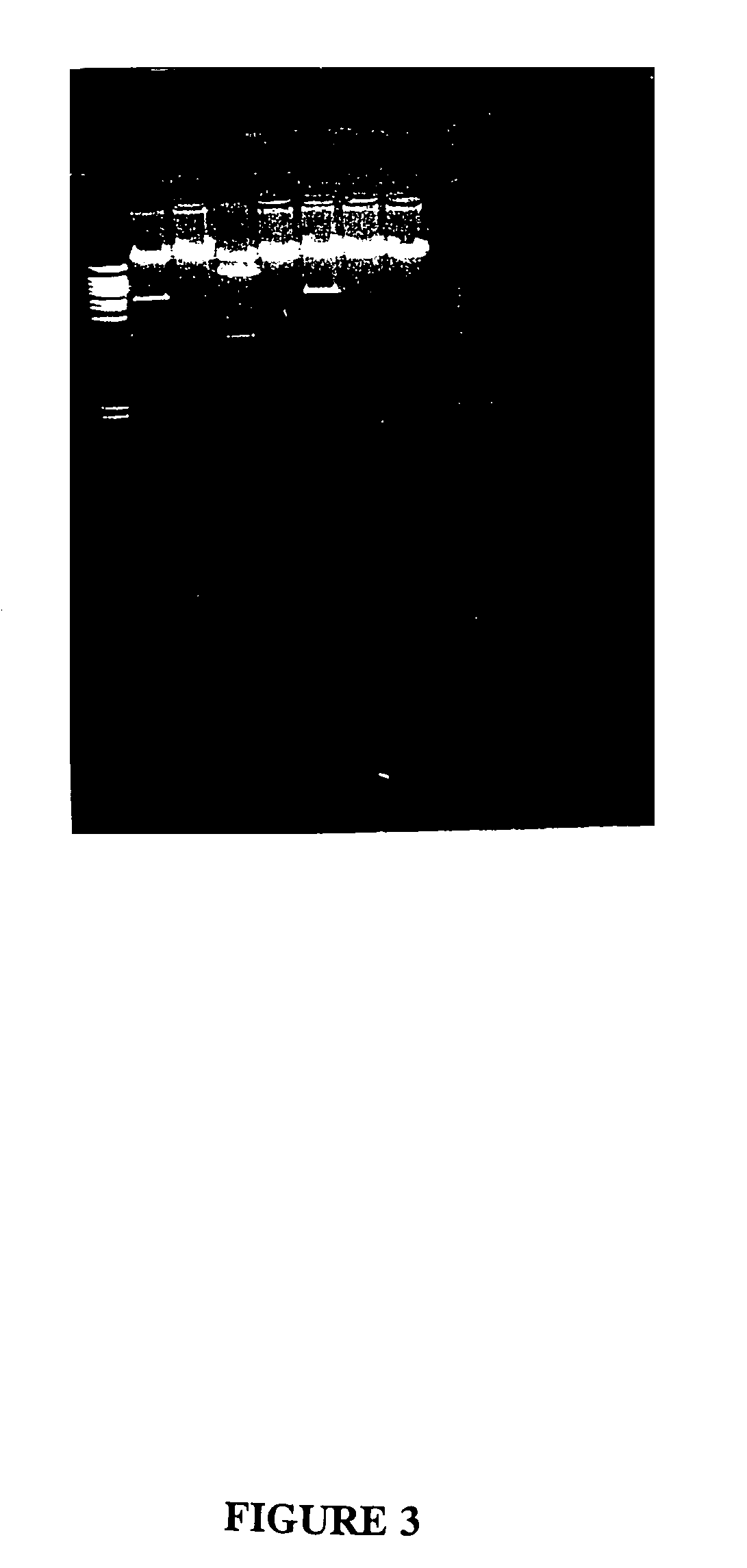Compositions containing bacteriophages and methods of using bacteriophages to treat infections
a technology of bacteriophage and composition, applied in the direction of snake antigen ingredients, protozoa antigen ingredients, viral antigen ingredients, etc., can solve the problems of no currently known practical workable concept or method, no known specifically useful phage therapeutic or composition of matter containing a phage therapeutic, and no known practical use of phage therapeutics. to achieve the effect of efficient and economically feasibl
- Summary
- Abstract
- Description
- Claims
- Application Information
AI Technical Summary
Benefits of technology
Problems solved by technology
Method used
Image
Examples
example one
[0049]The following procedure can be followed to prepare purified, toxin-free phage preparations specific to any of the bacterial microorganisms listed above. Bacteriophage specific to any of these microorganisms can be grown in vitro or in vivo in a test animal such as a mouse using methods known in the art. Wood, W. B., et al., Building a Bacterial Virus, Scientific American, (1967). Samples of materials containing the bacteriophage then are collected and further treated to isolate and purify the bacteriophage.
[0050]The phage purification and toxin removal will be accomplished by differential centrifugation, serial filtration and size exclusion chromatography. Toxins are removed thoroughly by surfactants of high non-ionic strength as well as dissociating compounds (urea and sucrose). Commercial kits are used to monitor toxin contamination. (Limulus Amebocyte Lysate Assay, Associates of Cape Cod Inc., Woods Hole Mass.).
example two
[0051]The purified phage preparation suitable for oral administration to treat systemic infections is prepared by packaging the phage preparation into highly lipophilic microcapsules such as liposomes or dendrimers. Delivery also is effected by the transnasal route.
example three
[0052]The following procedure can be followed to determine the clinical efficacy of the host-specific, non-toxic purified phage preparation of Example 1, or the phage compositions of Example 2.
[0053]Test One
[0054]Test animals such as dogs, rats, monkeys or other species are subjected to lethal doses of bacteria such as klebsiella or enterobacter and are observed clinically and microbiologically. Equal numbers of such animals subjected to the above lethal doses also are treated with adequate dosages of the phage preparations of Example 1 delivered by intravenous, intraperitoneal, intramuscular, transcutaneous or other route by adequate vehicle such as liposome or patch or other capsule obviating injection, and are observed clinically and microbiologically.
[0055]Results: Results are assayed in clinical and microbiological terms. Cultures from treated versus non-treated animals with quantitative titers show that the host-specific non-toxic purified phage preparations of Example 1 inhib...
PUM
| Property | Measurement | Unit |
|---|---|---|
| period of time | aaaaa | aaaaa |
| pore size | aaaaa | aaaaa |
| pore size | aaaaa | aaaaa |
Abstract
Description
Claims
Application Information
 Login to View More
Login to View More - R&D
- Intellectual Property
- Life Sciences
- Materials
- Tech Scout
- Unparalleled Data Quality
- Higher Quality Content
- 60% Fewer Hallucinations
Browse by: Latest US Patents, China's latest patents, Technical Efficacy Thesaurus, Application Domain, Technology Topic, Popular Technical Reports.
© 2025 PatSnap. All rights reserved.Legal|Privacy policy|Modern Slavery Act Transparency Statement|Sitemap|About US| Contact US: help@patsnap.com



